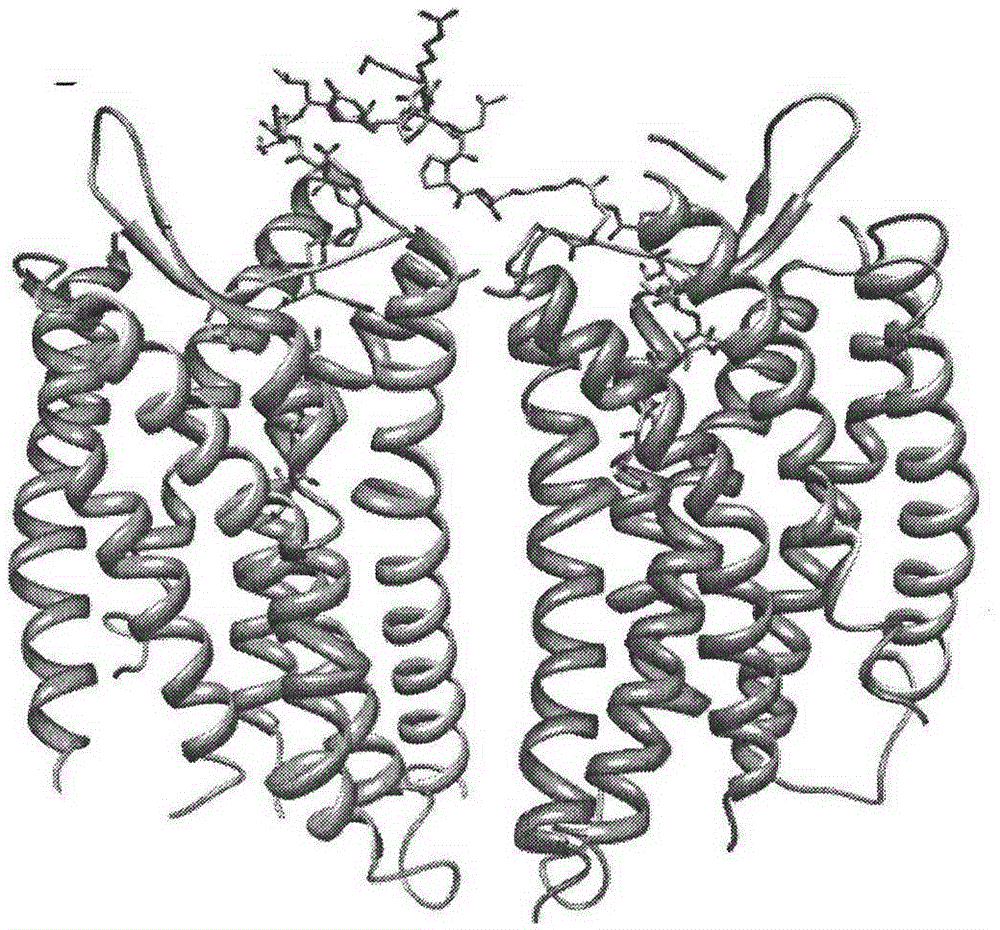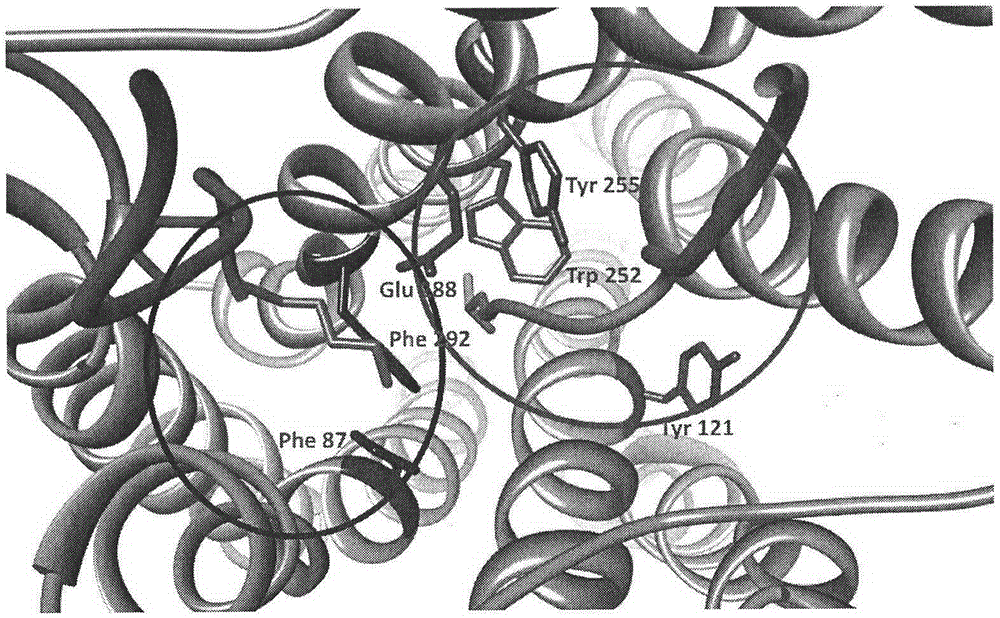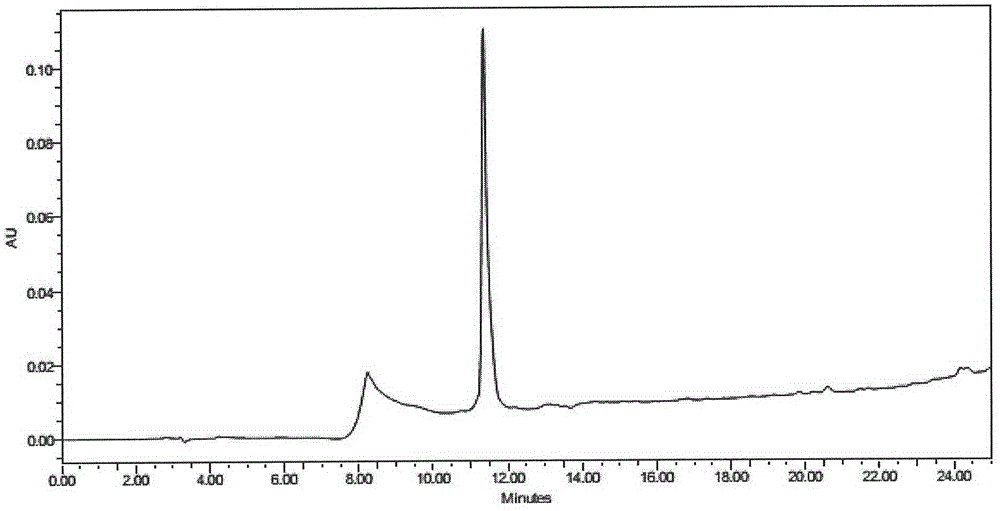Active polypeptide with function of antagonizing chemokine receptor CXCR4 as well as design preparation and biomedical application of active polypeptide
A technology of peptide derivatives and activity, which is applied in the field of design and preparation of active peptides with antagonistic chemokine receptor CXCR4 and biomedical applications, which can solve the problems of low survival rate and poor prognosis of patients, and achieve biological stability Good, strong anti-HIV-1 virus invasion, strong anti-tumor cell metastasis effect
- Summary
- Abstract
- Description
- Claims
- Application Information
AI Technical Summary
Problems solved by technology
Method used
Image
Examples
Embodiment 1
[0031] Example 1 Design of polypeptides.
[0032] Peptide design was performed using molecular dynamics simulations. Specifically, the Biopolymer module in the SYBYL-x software package is used to perform simulation calculations to predict the binding conformation of the designed polypeptide to the CXCR4 protein. The CXCR4 protein model was constructed from the published crystal structure (PDB: 3ODU). Use software to organize the crystal structure of CXCR4, remove redundant ligand molecules, water molecules and other small molecules, add hydrogen and charge to the protein file, and obtain the mol2 file. The structure of the polypeptide molecule undergoes simulated annealing and energy minimization to obtain a relatively low-energy conformation. By manual adjustment, the peptide molecule is moved to the surface of the protein molecule, and the dihedral angle is adjusted to avoid molecular collision. In the process of molecular dynamics simulation, the structures of polypeptid...
Embodiment 2
[0034] Example 2 Synthesis and purification of the polypeptide.
[0035] Polypeptides were synthesized using solid-phase synthesis methods. The solid-phase resin adopts TentaGel Amide resin, and the polypeptide obtained by separation is a C-terminally aminated polypeptide. All amino acids were amino protected with 9-fluorenylmethoxycarbonyl (9-Fmoc). During the synthesis process, the carboxyl group of the first amino acid forms an amide bond with the activated amino group of the solid phase resin and connects to the solid phase. Through the deprotection of 20% piperidine 80% dimethylformamide (DMF), the Fmoc group is removed to expose the amino group, and under the action of the condensing agent DIC (5 equivalents) and HOBt (5 equivalents) and The carboxyl group of the next amino acid (5 equivalents) was reacted. Excess reactants and condensing agents were removed after the reaction by washing the solid phase resin with DMF. In this way, the sequence of the polypeptide is ...
Embodiment 3
[0038] Example 3 Affinity activity test of the polypeptide.
[0039] HEK293 cells are exogenously inserted with a CXCR4 plasmid, which can stably express CXCR4 protein. The cells were cultured in RPMI1640 (10% calf serum, 100 IU penicillin, 0.1 mg / mL streptomycin, 2 mM glutamine), and added 0.4 mg / mL G418 for selection. Before the experiment, HEK293 cells were digested with trypsin and collected, washed twice with FACS buffer (0.5% BSA, 0.05% sodium azide in PBS) at 4°C, and finally diluted with buffer to 1×10 7 cells / mL. Cells were mixed evenly and placed in a 96-well plate with conical wells, 5×10 per well 5 cell. The primary antibody (12G5, mouse anti-human CXCR4 antibody, 1:3000) and different concentrations of polypeptides were incubated with the cells on ice for 40 min, and then the cells were washed twice with FACS buffer. After completion, add secondary antibody (anti-mouse antibody-FITC, 1:250) and incubate on ice in the dark for 30 min. After the reaction, the c...
PUM
 Login to View More
Login to View More Abstract
Description
Claims
Application Information
 Login to View More
Login to View More - R&D
- Intellectual Property
- Life Sciences
- Materials
- Tech Scout
- Unparalleled Data Quality
- Higher Quality Content
- 60% Fewer Hallucinations
Browse by: Latest US Patents, China's latest patents, Technical Efficacy Thesaurus, Application Domain, Technology Topic, Popular Technical Reports.
© 2025 PatSnap. All rights reserved.Legal|Privacy policy|Modern Slavery Act Transparency Statement|Sitemap|About US| Contact US: help@patsnap.com



